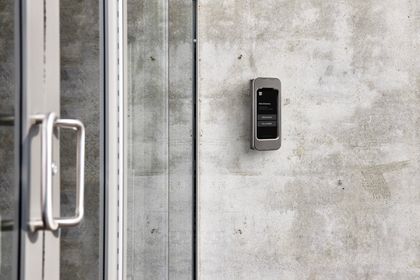Like every business unit, security and facilities teams strive to maximize value while minimizing costs. So, why do organizations insist on investing in pricey on-premise access control systems instead of simple cloud-based access control solutions? On-premise systems incur both large upfront capital expenditures as well as continuing operating, maintenance, and upgrade costs and hassles. Moreover, so-called on-premise systems require dedicated staff oversight.
Rather than host the system at your site, cloud-based access control occurs on a server hosted offsite by a managed security provider. This puts system management into the hands of experts, allowing you to deploy resources elsewhere. The cloud-based setup also allows system administrators to manage access control on any device with an Internet connection.
Below are 10 of the biggest benefits of cloud-based access control systems:
- 1. Basically, the Cloud Is Just a Very Capable Computer Server
- 2. You Already Use the Cloud
- 3. Lower Costs
- 4. Automatic Updates
- 5. Access From Anywhere
- 6. Instant User Enrollment
- 7. Instant Access Revocation
- 8. Speed and Flexibility
- 9. Scalability
- 10. Improved Network Security
Suggested Posts:
- Mastering Automatic Door Systems
- Guide to Touchless Access Control Systems
- The Evolution and Types of Apartment Entry Systems
1. Basically, the Cloud Is Just a Very Capable Computer Server
The term “cloud” is misunderstood or given mystical properties. It just means that software is run on a server that is not on your premises and is controlled and licensed to you by another entity. Your information resides in large data centers across the globe, which you access via simple interfaces such as browsers and mobile devices.
2. You Already Use the Cloud
Most business systems are already cloud based. Your chat messenger, email services, sales CRM tool, marketing tools, and engineering productivity tools all sit on cloud servers. So why is your access control system still running on an on-premise laptop or server designed in 2002?
3. Lower Costs
On-premise systems have high upfront costs and require regular maintenance and upgrades. You have to buy beefy workstations, tons of local storage, and large complex installation jobs. Plus, organizations with multiple sites may require multiple site licenses, and the same kind of setup at every site, which multiplies your costs even further.
4. Automatic Updates
Most on-premise systems require downtime and lots of complex software upgrades patches that can span a whole day every few months. These typically have to be done every 6 months to prevent any security risks, and require full day or multi-day downtimes. Cloud-based systems can update every week automatically without requiring any intervention from the company.
5. Access From Anywhere
Administrators can manage access from anywhere on a cloud based access control system, even from a phone at home, rather than from a single computer in the office. That’s especially important during a time when many people are working from home due to COVID-19.
6. Instant User Enrollment
Cloud based systems can be managed even from your phone, and tie into your employee directory systems. Administrators can add users instantly, via email, G Suite, Okta, and Active Directory integrations. Businesses can create a first-class onboarding experience because new employees already have access on day one.
7. Instant Access Revocation
Access can be revoked instantly from a browser or phone, and the process can be automated via Single Sign On integrations. Companies that use traditional access control systems suffer frequent access leaks from active key cards of terminated contractors and employees. That’s an enormous security and compliance risk.
8. Speed and Flexibility
Cloud-based access control systems allow you to change access instantly, from anywhere. You can configure new permissions when someone changes organizations; there’s no need to wait to make a trip to a computer in a server room or front desk.
9. Scalability
Cloud-based systems scale to multiple sites without any costs. Traditional systems cost tens of thousands of dollars, simply to connect various servers in each building. They are not designed to work beyond a single installation inside a building. A cloud-based system can plug in devices from any number of buildings, in multiple cities, on multiple floors without requiring any complex configuration.
10. Improved Network Security
Traditional on-premise systems require opening ports in your network configuration, and require heavy, unauthenticated communication over insecure forms of connectivity such as HTTP. This opens up the company network to many types of exploits. Another benefit of cloud-based access control systems, is that they operate in highly secure data centers, with a very small hardware footprint inside your building. This minimizes the networking configurations, and most cloud based systems also run on encrypted communication channels like HTTPS and TLS.
In a nutshell, those are some of the benefits of using a cloud based access control system. Please reach out to us at Swiftlane, to discuss your project if you have any questions.
Upgrade Your Building Security
Get in touch with a Swiftlane specialist for more information on the best access control and video intercom solution for your building.




